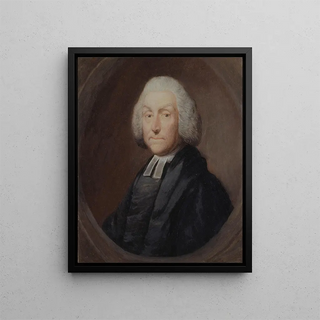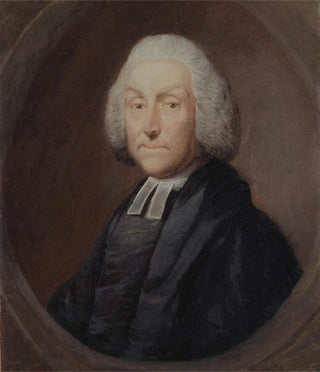Art print | The Reverend Samuel Uvedale - Thomas Gainsborough


View from behind

Frame (optional)
In the vibrant world of 18th-century English painting, the artwork "The Reverend Samuel Uvedale" by Thomas Gainsborough stands out for its depth and elegance. This canvas, depicting a man in full contemplation, not only showcases Gainsborough's undeniable talent but also his ability to capture the very essence of his subjects. The art print of this iconic piece allows appreciation of the artist's virtuosity and immerses the viewer's environment in an atmosphere filled with serenity and reflection. Through this work, the viewer is invited to explore the subtleties of light, the nuances of color, and the silent language of human expressions.
Style and uniqueness of the work
Gainsborough's style is often characterized by an intimate approach and a particular attention to detail. In "The Reverend Samuel Uvedale," he manages to create a peaceful, almost contemplative atmosphere. The choice of colors, ranging from earthy tones to delicate shades, helps establish a dialogue between the subject and its environment. Gainsborough excels in rendering textures, whether through the fabric of clothing or the softness of the skin, making each element come alive. This art print also stands out for its balanced composition, where the main subject is harmoniously integrated into a natural background, symbolizing harmony between man and nature. The reverend's posture, slightly leaning, evokes deep introspection, strengthening the connection between the individual and his landscape.
The artist and his influence
Thomas Gainsborough, an iconic figure of English painting, knew how to mark his era with his innovative style and artistic sensitivity. Born in 1727, he quickly gained notoriety, becoming one of the most sought-after portraitists of his time. However, Gainsborough was not limited to portraits; he was also passionate about landscapes, seeking to capture the natural beauty of England. His influence extends far beyond his own artistic production, inspiring generations of artists. His ability to combine realism with a certain visual poetry paved the way for new artistic currents, while redefining the way

Matte finish

View from behind

Frame (optional)
In the vibrant world of 18th-century English painting, the artwork "The Reverend Samuel Uvedale" by Thomas Gainsborough stands out for its depth and elegance. This canvas, depicting a man in full contemplation, not only showcases Gainsborough's undeniable talent but also his ability to capture the very essence of his subjects. The art print of this iconic piece allows appreciation of the artist's virtuosity and immerses the viewer's environment in an atmosphere filled with serenity and reflection. Through this work, the viewer is invited to explore the subtleties of light, the nuances of color, and the silent language of human expressions.
Style and uniqueness of the work
Gainsborough's style is often characterized by an intimate approach and a particular attention to detail. In "The Reverend Samuel Uvedale," he manages to create a peaceful, almost contemplative atmosphere. The choice of colors, ranging from earthy tones to delicate shades, helps establish a dialogue between the subject and its environment. Gainsborough excels in rendering textures, whether through the fabric of clothing or the softness of the skin, making each element come alive. This art print also stands out for its balanced composition, where the main subject is harmoniously integrated into a natural background, symbolizing harmony between man and nature. The reverend's posture, slightly leaning, evokes deep introspection, strengthening the connection between the individual and his landscape.
The artist and his influence
Thomas Gainsborough, an iconic figure of English painting, knew how to mark his era with his innovative style and artistic sensitivity. Born in 1727, he quickly gained notoriety, becoming one of the most sought-after portraitists of his time. However, Gainsborough was not limited to portraits; he was also passionate about landscapes, seeking to capture the natural beauty of England. His influence extends far beyond his own artistic production, inspiring generations of artists. His ability to combine realism with a certain visual poetry paved the way for new artistic currents, while redefining the way






